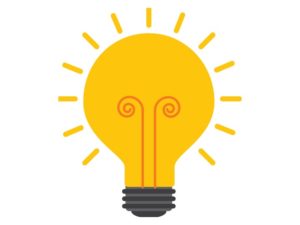When We Reach the End of What We Should Know
 A Conversation with Arnaud Lacoste, Chief Scientific Officer of Aurion Biotech
A Conversation with Arnaud Lacoste, Chief Scientific Officer of Aurion Biotech
To most people, innovation is a mystery: how does it happen? Where do new ideas come from? Is it possible for scientists to increase their probability of conceiving successful new ideas?
We sat down with Arnaud Lacoste, Aurion Biotech’s chief scientific officer, to ask these questions and understand how the company nurtures creativity and drives innovation.
From Satellites to Genes
Arnaud’s path to biomedical sciences wasn’t traditional. In fact, he earned his PhD in oceanography: “Early in my post-grad research, I used satellite data and mathematical models, not pipettes and microscopes, to understand biological systems at the scale of entire oceans.” While he loved researching how climate changes affect oceans and human populations, he was frustrated that often, research did not translate into policies and the real impact on people could be limited.
So, he turned to biomedical sciences, because he felt he could have a more direct impact on people’s lives. While most scientists become highly specialized by necessity, Arnaud’s training enabled him to conceive of problems beyond their details, starting from a ‘big picture’ perspective, a satellite view of a problem.
“When I started studying biomedicine, I knew nothing about the biology of human diseases; I just applied the basic principles of the scientific method and a good dose of intuition,” said Arnaud. “And very early, the main paradigm that medicine is based on, using chemical matter to cure disease, felt counter-intuitive to me. Pharmaceuticals work in the case of infectious diseases, for example, when you want to kill a foreign agent in the body. But pharmaceuticals have not enabled medicine to cure the major degenerative diseases that affect us all. So, I landed quickly in the camp of those who believed that to cure diseases caused by dysfunctional genes, cells or tissue, we should be able to create healthy genes, cells or tissue.”
That unique perspective spurred Arnaud to explore the potential of cells and genes as therapeutics.
“The problem with this approach to medicine, as most scientists will tell you, is that it remains to be created!” he said. “With pharmaceuticals, drug makers can use decades-old blueprints as guides. But in the field of cell and gene therapies, we are building the plane as we are flying it. Almost everything is a pure act of innovation. Often, the only guide is our own creativity and that of our teams.”
Creativity at the End of What is Known
Innovative thinking seems magical. Mysterious. How do people conceive of problems in new ways? Of course, it requires creativity, but how do people nurture their own creativity?
“For me,” Arnaud continued, “the ability to generate a ‘satellite’ view of a problem helps to create a mental map, clearly establish where knowledge ends and where innovation starts. How do we find our way through the unknown? How do we create a medical paradigm based on cell and gene therapies when most of the medical ecosystem is designed around the use of pharmaceuticals? What is our starting point?”
“I like this quote by Kahlil Gibran,” said Arnaud: ‘When you reach the end of what you should know, you will be at the beginning of what you should sense.’ As scientists, we love to think that logical, intelligent interpretations of existing data are primary sources for our creativity. But when we face the unknown and data is lacking, this approach typically does not apply. The initial creative spark then comes from an intangible and seemingly illogical ‘feeling’ that a direction is worth exploring, a little inner voice called intuition. Scientists ‘rationalize’ intuitive thoughts, wrap them in logical arguments and hide them under fancy technical terms. But in my experience, the most creative scientists explore new problems just like young children and artists, by relying on that uniquely human quality of intuition.”
“When I started working with pluripotent stem cells, the field was so new, scientists did not precisely understand how these cells worked,” said Arnaud. “I remember thinking, ‘I have no idea why, but I feel like I should design an experiment that way’. Several other scientists around me worked in a similar way. We were often unable to logically justify why we ran a particular experiment a certain way or explain what made it work. The experiment just worked.”
“Interestingly, the opposite was also true. Colleagues who failed were often the ones who used published articles, established protocols or other pre-existing rationale to create their experimental designs. They tried really hard to ignore their intuitive sense of where to go. In their minds, science should be driven by logic and established data, which of course, in a new field of research simply doesn’t yet exist. I have seen this situation many times.”
So, how do you create an environment where innovative people thrive at Aurion Biotech? How do you even recruit and manage people who use intuition to drive creativity and innovation in the organization?
“These questions are central to creating a culture of innovation in any organization, and we don’t ask (or discuss) them often enough,” said Arnaud. “But they’re also topics for a future blog post.”
We will hold Arnaud to his word, with more interviews and resulting blog posts!